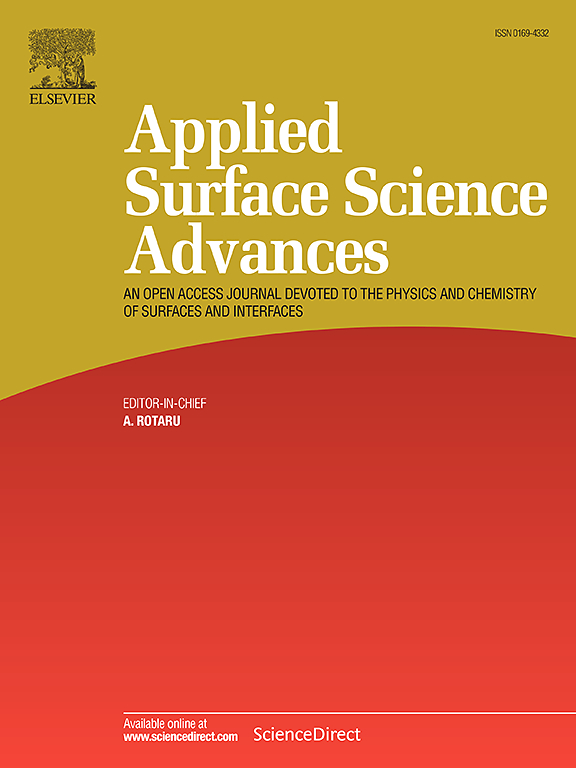Surface properties of nanostructured alginate-based bioprinted patches
IF 7.5
Q1 CHEMISTRY, PHYSICAL
引用次数: 0
Abstract
Gels of alginate/poly-vinyl alcohol, alginate/poly-vinyl alcohol/indocyanine green freely dispersed and alginate/poly-vinyl alcohol/indocyanine green dispersed liposomes were used to bioprint three different patches. Scanning electron microscope images reveal that the crosslinking with calcium chloride has an effect on surface topography, which causes the formation of aggregates, pores and regular asperities. The atomic force microscopy analysis quantifies the pores distribution and measures surface rugosity. The number and surface area of pores is reduced for systems containing free dye and even more for dye-loaded liposomes. A finer scan on surface allowed for the characterization of liposome aggregations on the surface. Their dimensions are identical to those measured in the aqueous dispersions upstream. Furthermore, surface roughness of samples containing free and/or encapsulated dye is significantly reduced. Intrusive chemical species in the gel interact with the matrix and smooth the cross-linking contraction. Planarized measurement of the nanovesicles dimensions disclose that their shape and diameter are preserved, having a peak at 120 nm. Fibre optics reflectance spectra were performed to investigate the interactions between light and the surfaces of the patches. They reveal that liposomes protect the dye from light degradation and aggregation. Transmittance measurements were renormalized to calculate absorbance spectra and compare them with those in aqueous dispersion. Patches with liposomes containing the dye present classical sharp optical spectra centred at 800 nm, similar to the spectrum of a dye-loaded liposomal dispersion in water. Besides, the patch with dye freely dispersed is attenuated and enlarged, suggesting that the dye is forming less responsive stacks.

使用藻酸盐/聚乙烯醇凝胶、藻酸盐/聚乙烯醇/吲哚菁绿自由分散凝胶和藻酸盐/聚乙烯醇/吲哚菁绿分散脂质体凝胶对三种不同的斑块进行生物打印。扫描电子显微镜图像显示,氯化钙交联对表面形貌产生了影响,从而形成了聚集体、孔隙和规则的斜面。原子力显微镜分析对孔隙分布进行了量化,并测量了表面凹凸度。对于含有游离染料的系统,孔隙的数量和表面积都有所减少,而对于负载染料的脂质体,孔隙的数量和表面积减少得更多。通过对表面进行更精细的扫描,可以确定表面脂质体聚集的特征。它们的尺寸与上游水分散体中测量到的尺寸相同。此外,含有游离和/或封装染料的样品表面粗糙度明显降低。凝胶中的侵入化学物质与基质相互作用,使交联收缩变得平滑。对纳米微粒尺寸的平面测量显示,它们的形状和直径都保持不变,峰值为 120 纳米。为了研究光与贴片表面之间的相互作用,还进行了光纤反射光谱分析。结果表明,脂质体能保护染料不受光降解和聚集的影响。对透射率测量结果进行了重归一化处理,以计算吸光度光谱,并将其与水分散液中的吸光度光谱进行比较。含有染料的脂质体贴片呈现出以 800 纳米为中心的经典锐利光学光谱,与水中染料脂质体分散体的光谱相似。此外,染料自由分散的斑块会衰减和扩大,这表明染料形成的反应堆叠较小。
本文章由计算机程序翻译,如有差异,请以英文原文为准。
求助全文
约1分钟内获得全文
求助全文

 求助内容:
求助内容: 应助结果提醒方式:
应助结果提醒方式:


